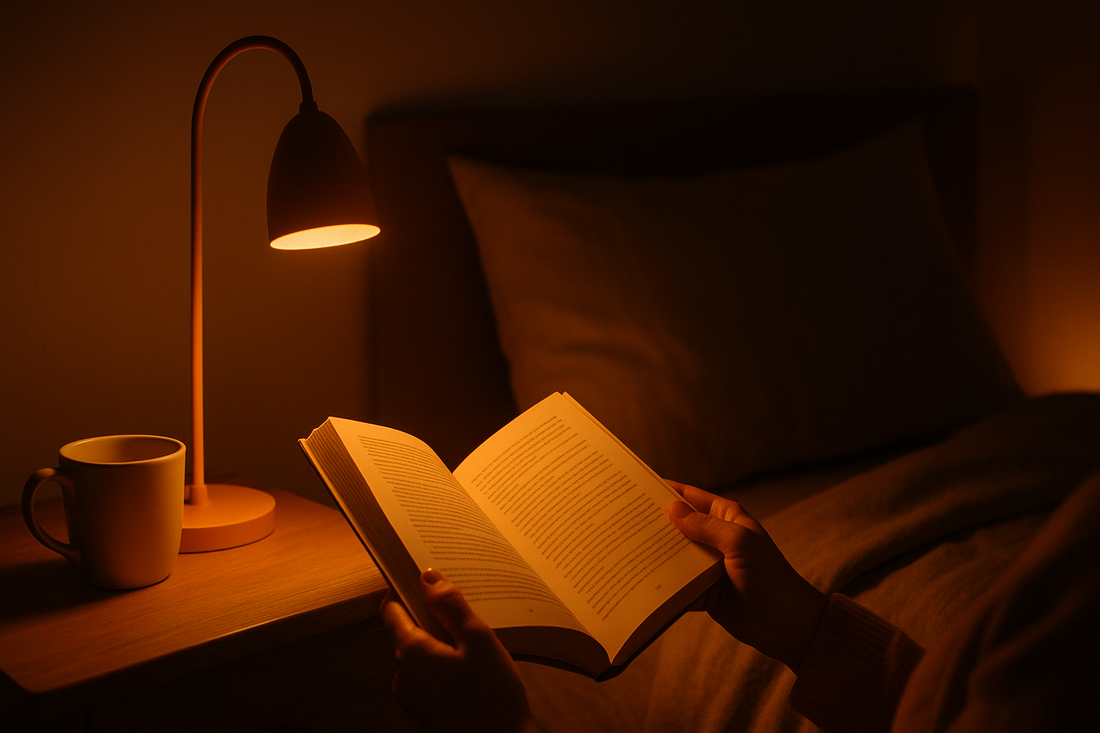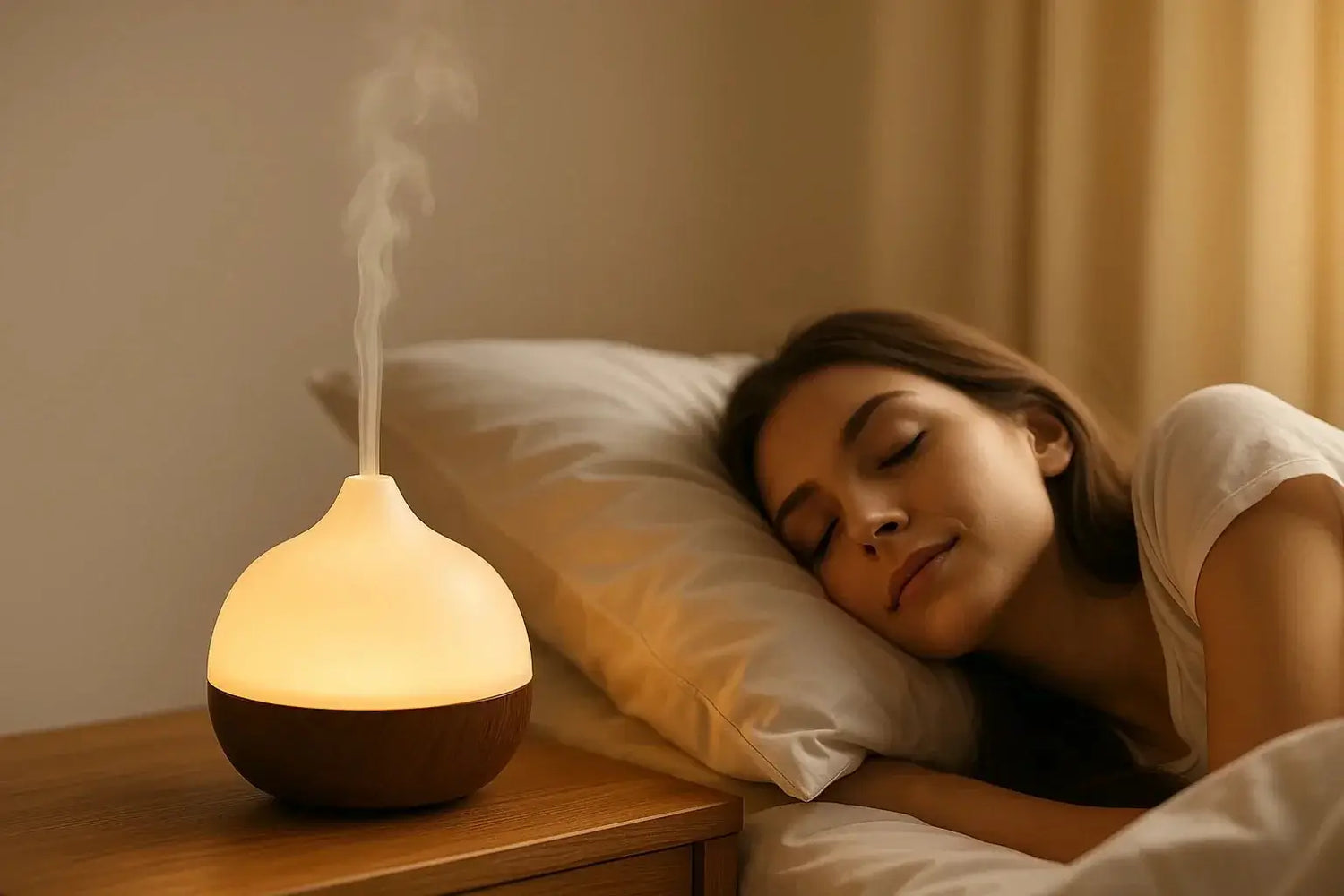
Does Amber Light Really Help You Sleep Better? (The Science Explained)
Share
You've probably heard that blue light from phones and screens disrupts sleep. But what about amber light? Can switching to warm, amber-colored lighting actually help you sleep better?
The short answer: Yes—and the science is compelling.
Research shows that amber light filters out sleep-disrupting blue wavelengths, allowing your brain to produce melatonin naturally even when you're using light before bed.
In this guide, you'll discover exactly how amber light affects your sleep, why it's superior to white or blue light, and how to use it for better rest.
The Science: How Light Affects Your Sleep
Your brain contains specialized cells called intrinsically photosensitive retinal ganglion cells (ipRGCs) that detect light and regulate your circadian rhythm.
Blue light (450-480nm wavelength):
- Activates ipRGCs strongly
- Suppresses melatonin production by 50%+
- Signals your brain "it's daytime, stay awake"
- Delays sleep onset by 30-60 minutes
Amber light (580-620nm wavelength):
- Barely activates ipRGCs
- Allows normal melatonin production
- Doesn't signal "daytime" to your brain
- Permits natural sleepiness
The result: You can use amber light before bed without sabotaging your sleep.
The Research: Amber Light vs. Blue/White Light
Study #1: Melatonin Suppression
Research: University of Basel, Switzerland (2013)
Findings:
- Blue light suppressed melatonin by 50%
- White LED light suppressed melatonin by 35%
- Amber light suppressed melatonin by only 5%
Conclusion: Amber light has minimal impact on your sleep hormone production.
Study #2: Sleep Onset Time
Research: Lighting Research Center, Rensselaer Polytechnic Institute
Findings:
- Participants using white light before bed took 45 minutes to fall asleep
- Participants using amber light took 18 minutes to fall asleep
- Amber light users reported 40% better sleep quality
Conclusion: Amber light helps you fall asleep significantly faster.
Best Uses for Amber Light Before Bed
1. Bedtime Reading
The problem: You love reading before bed, but overhead lights or white book lights disrupt your sleep.
The solution: Use an amber reading light that provides focused illumination on your book, filters out 100% of blue wavelengths, allows natural melatonin production, and doesn't disturb your partner.
Result: Enjoy your reading habit without sacrificing sleep quality.
2. Nighttime Bathroom Trips
The problem: Bright bathroom lights at 3 AM fully wake you up, making it hard to fall back asleep.
The solution: Install amber night lights in bathrooms and hallways.
Result: You can navigate safely without triggering full wakefulness.
3. Evening Activities
The problem: You need light for evening tasks but don't want to disrupt your sleep rhythm.
The solution: Switch to amber bulbs in frequently-used evening spaces 2-3 hours before bed.
Result: Maintain normal activities while protecting your melatonin production.
How to Use Amber Light for Better Sleep
Step 1: Start 2-3 Hours Before Bed
Switch from white/blue light to amber light 2-3 hours before your target bedtime. This gives your brain time to gradually increase melatonin production.
Step 2: Use Amber Light for Reading
If you read before bed, use an amber neck reading light or clip-on book light, position it to illuminate only your book (not the whole room), and choose adjustable brightness for comfort.
Step 3: Dim the Amber Light Gradually
As you get closer to bedtime, reduce the brightness of your amber light. Dimmer light signals your brain that sleep is approaching.
Step 4: Combine with Other Sleep Hygiene
For maximum results, pair amber light with cool bedroom temperature (65-67°F), complete darkness when sleeping, aromatherapy, and a consistent bedtime routine.
Common Questions About Amber Light
Q: Can I use amber light all day?
A: No—you need bright blue/white light during the day to maintain a healthy circadian rhythm. Use amber light only in the 2-3 hours before bed.
Q: Is amber light the same as "warm white" bulbs?
A: No. "Warm white" bulbs (2700-3000K) still contain blue wavelengths. True amber light (1800-2200K) filters out virtually all blue light.
Q: Will amber light make my room look orange?
A: Yes, slightly—but your eyes adjust within minutes. The warm glow creates a cozy, relaxing atmosphere perfect for winding down.
Q: Can kids use amber light?
A: Absolutely! Children are even more sensitive to blue light than adults. Amber night lights and reading lights are excellent for kids' bedrooms.
The Bottom Line
Yes, amber light really does help you sleep better.
The science is clear: amber light allows your brain to produce melatonin naturally, helping you fall asleep 30-45 minutes faster than when using white or blue light.
Use amber light if you:
- Read before bed
- Need light for evening activities
- Have trouble falling asleep
- Work irregular hours
- Want to protect your sleep quality
The key: Switch to amber light 2-3 hours before bed and avoid all blue/white light during that window.
Most people notice results within 3-5 nights:
- Falling asleep faster
- Feeling naturally drowsy at bedtime
- Better sleep quality
- More refreshed mornings
Discover amber reading lights designed specifically for bedtime use—hands-free, adjustable, and optimized for sleep-friendly illumination. Read comfortably without sacrificing your sleep. 📚💤

